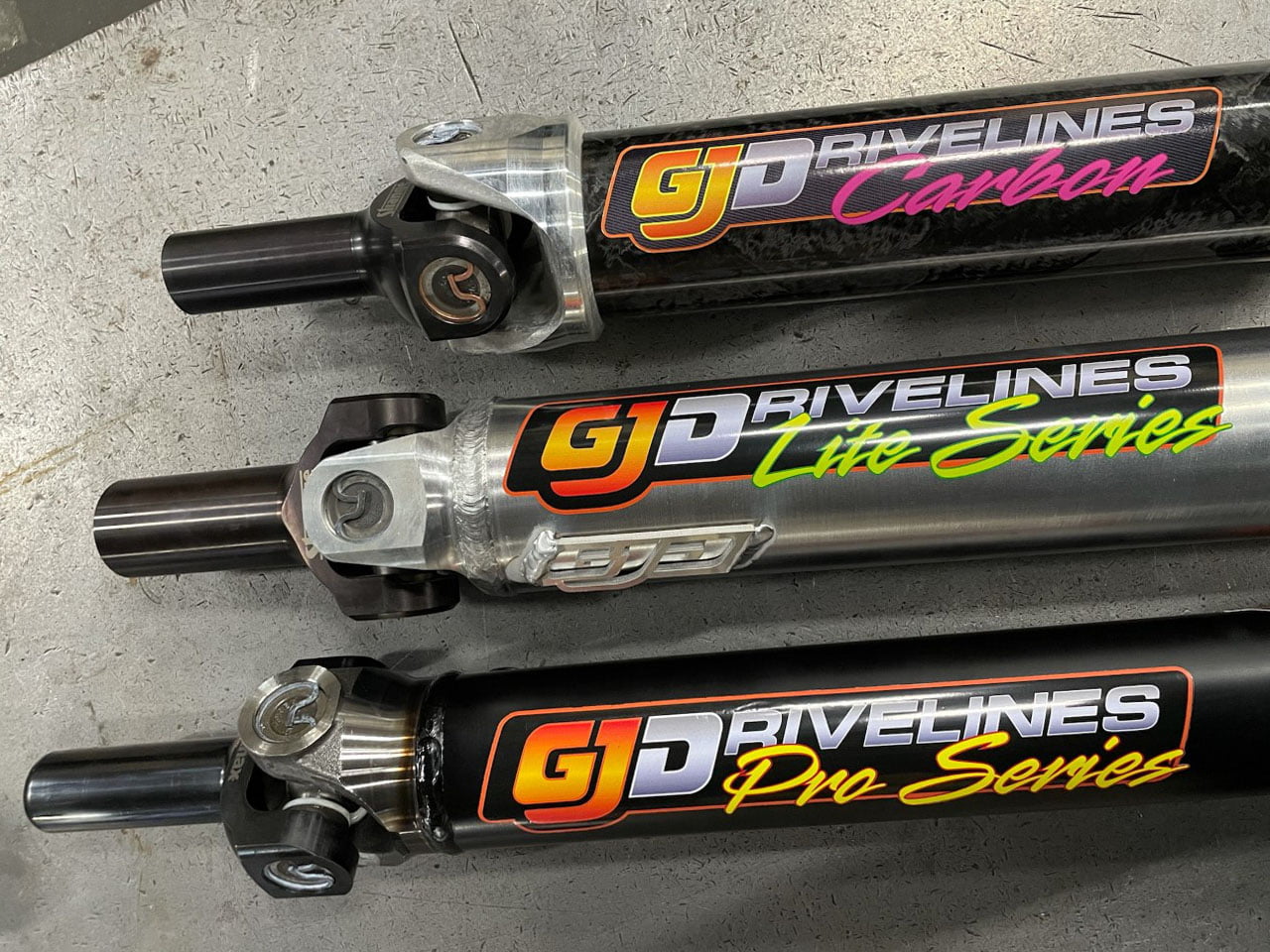No products in the cart.


Ever wondered what that long, spinning thing under your car actually is?
We’re talking about the tailshaft, of course! It’s a crucial part of your car’s drivetrain, and while you might not think about it much, it plays a vital role in getting you from A to B.
So, let’s break down Tailshaft 101 and give you a beginner’s guide to understanding this essential component.
In simple terms, the tailshaft is a rotating shaft that transmits power from your car’s gearbox to the differential. The differential then distributes that power to the wheels, making your car move.
Think of it as the link between the engine’s power and the wheels on the road. It’s a pretty important job!
While they all serve the same basic purpose, tailshafts can come in different shapes and sizes depending on the type of vehicle. You’ll find different tailshaft configurations in rear-wheel-drive cars, four-wheel drives, and even some all-wheel-drive vehicles.
Some tailshafts are made from a single piece of metal, while others are made from multiple sections joined together. The design depends on the vehicle’s specific needs and engineering.
Like any mechanical part, tailshafts can experience problems over time.
One common issue is wear and tear on the centre bearing, which supports the tailshaft. Another potential problem is damage to the universal joints, which allow the tailshaft to flex and move. Imbalance can also occur, leading to vibrations.
Ignoring these issues can lead to more serious damage and costly repairs down the track.
Regular maintenance is key to keeping your tailshaft in good condition. This includes checking for any signs of damage, ensuring proper lubrication, and having the tailshaft balanced if necessary.
If you notice any unusual vibrations or noises coming from under your car, it’s best to get it checked out by a qualified mechanic. A little bit of preventative maintenance can go a long way in extending the life of your tailshaft.
Understanding the basics of your car’s components, including the tailshaft, can help you keep your vehicle running smoothly and safely. By knowing what to look for and when to seek professional help, you can avoid costly repairs and ensure a comfortable driving experience.
Ready to Learn More?
At GJ Drivelines, we’re passionate about helping you keep your vehicle in top condition.
If you have any questions about tailshafts or require expert advice, don’t hesitate to reach out to our team today. We’re here to help!
Ever wondered what that long, spinning thing under your car actually is?
We’re talking about the tailshaft, of course! It’s a crucial part of your car’s drivetrain, and while you might not think about it much, it plays a vital role in getting you from A to B.
So, let’s break down Tailshaft 101 and give you a beginner’s guide to understanding this essential component.
In simple terms, the tailshaft is a rotating shaft that transmits power from your car’s gearbox to the differential. The differential then distributes that power to the wheels, making your car move.
Think of it as the link between the engine’s power and the wheels on the road. It’s a pretty important job!
While they all serve the same basic purpose, tailshafts can come in different shapes and sizes depending on the type of vehicle. You’ll find different tailshaft configurations in rear-wheel-drive cars, four-wheel drives, and even some all-wheel-drive vehicles.
Some tailshafts are made from a single piece of metal, while others are made from multiple sections joined together. The design depends on the vehicle’s specific needs and engineering.
Like any mechanical part, tailshafts can experience problems over time.
One common issue is wear and tear on the centre bearing, which supports the tailshaft. Another potential problem is damage to the universal joints, which allow the tailshaft to flex and move. Imbalance can also occur, leading to vibrations.
Ignoring these issues can lead to more serious damage and costly repairs down the track.
Regular maintenance is key to keeping your tailshaft in good condition. This includes checking for any signs of damage, ensuring proper lubrication, and having the tailshaft balanced if necessary.
If you notice any unusual vibrations or noises coming from under your car, it’s best to get it checked out by a qualified mechanic. A little bit of preventative maintenance can go a long way in extending the life of your tailshaft.
Understanding the basics of your car’s components, including the tailshaft, can help you keep your vehicle running smoothly and safely. By knowing what to look for and when to seek professional help, you can avoid costly repairs and ensure a comfortable driving experience.
Ready to Learn More?
At GJ Drivelines, we’re passionate about helping you keep your vehicle in top condition.
If you have any questions about tailshafts or require expert advice, don’t hesitate to reach out to our team today. We’re here to help!
Chrysler – Dodge
727 – 30 Spline 1 11/16″ Seal Diameter
904 – 26 Spline 1 9/16″ Seal Diameter
Ford
C6-T56 – 31 Spline 1 11/16″ Seal Diameter
AOD & C4 & T5 – 28 Spline 1 1/2″ Seal Diameter
4 R 7OW – 28 Spline 1.598″ Seal Diameter
General Motors
T-350 700R4-4LLOE – 27 Spline 1 1/2″ Seal Diameter
T-400-4L80E – 32 Spline 1 7/8″ Seal Diameter
Note: Transmission slip yokes are manufactured with various U-Joint Series. It is important to match Horsepower and Torque requirements to U-Joint Series. For aftermarket transmission applications usually a spline count and seal diameter will identify slip yoke required.

If Pinion Yoke has Placement tabs that retain the U-Joint, measure inside tabs. See Diagram D.

If Pinion Yoke does not have Placement Tabs that retain U-Joint, measure from flat of yoke inside to inside. See Diagram E.

If 4 bolt Flange is used on pinion, measure Pilot Diameter and center to center diagonally bolt hole to bolt hole. See Diagram L.

Universal Joint Size. There are hundreds of U-Joint sizes or “Series” to accomodate many different applications of power and desired longevity for your automotive, 4×4 truck or auto racing requirements, these 4 series of joints cover most needs.
1310 Spicer Series: 1 1/16″ Cup Diameter (Dim C – Diagram A) 3 7/32″ length (Dim B – Diagram A) Certain Ford applications have 2 cups 1 1/8 Diameter. Appropriate horse power range is up to 500 in circle track or road racing, small tire drag racing and 4×4. Also available: Performance Dynamic Cryo Joint.
1330 Spicer Series: 1 1/16″ Cup Diameter (Dim C – Diagram A) 3 5/8″ length (Dim B – Diagram A) Certain Ford applications have 2 cups 1 1/8 Diameter. Slightly stronger than 1310, Used in 5.0 Mustangs. Also available: Performance Dynamic Cryo Joint.
3R Saginaw Series: 1 1/8″ Cup Diameter (Dim C – Diagram A) Retained with internal clip 2 5/8″ (Dim B – Diagram A). Most common GM joint. Horse power range up to 700 in road racing and circle track. Solid drag racing U-Joint can accomodate most sportsman classes. Also available: Performance Dynamic Cryo Joint.
1350 Spicer Series: Manufactured with OEM tolerances and treated with our Cryogenic Process to yeild the strongest U-Joint available. For drag racing applications a solid non-lube design U-Joint is recommended because of the tremendous initial shock load, or short duration of high torque the joint must be able to withstand.

If PST is supplying you with transmission slip yoke, Pinion yoke and driveshaft yoke measure Dim W. See Diagram N.
If PST is supplying you with transmission slip yoke and driveshaft measure Dim X. See Diagram N.
2 Piece driveshafts use Dim Y + Z. See Diagram N.